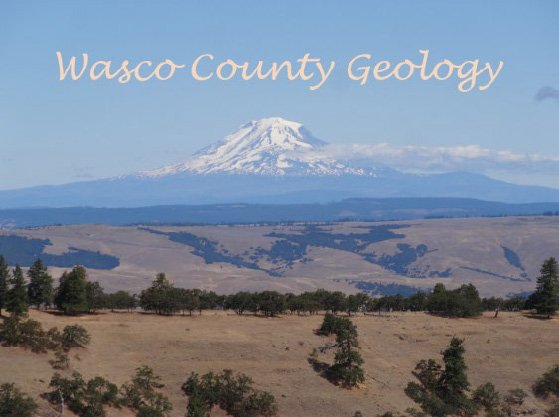Nick Zentner, Pacific Northwest’s ‘Rock Star’!
/Zentner explains the connection between magma silica content and style of volcano.
by Carol Hasenberg
This article is going to be a bit of a departure from the typical GSOC Friday night lecture synopsis, because there is an online video version of the “Supervolcanoes” lecture available on Nick Zentner’s web page. However, the GSOC lecture itself was a happening due to the popularity of Zentner’s video productions, and there were some wrinkles in the Supervolcanoes lecture that he did specifically for our group that are worth noting. To begin the lecture, Zentner talked about his inspiration for doing the topic of Supervolcanoes in the Pacific Northwest.
Zentner was the guest speaker at the 79th Annual GSOC banquet in 2014. On that occasion, he spoke to the group about the geology of the Kittitas Valley in Washington. During the banquet Zentner sat next to Dr. Paul Hammond, PSU Professor Emeritus and longtime GSOC member. They struck up a conversation, during the course of which Dr. Hammond asked Zentner if he was aware of the calderas that DOGAMI’s Jason McClaughry and others had recently recognized in Oregon, including the Crooked River Caldera which contains Smith Rock as one of its boundary features. Hammond told Zentner that these calderas were likely the result of activity from the Yellowstone Hot Spot. From there, Dr. Hammond took out a napkin and sketched out just how a caldera located a few hundred miles north of the track of the Yellowstone Hot Spot could have been caused by it.
This was the beginning of a lecture in which Zentner also could incorporate his knowledge of Idaho geology (he got his master’s degree at Idaho State University) and some interesting features of geology from his current home in Ellensburg, Washington, where he teaches at Central Washington University. Specifically, near Mattawa, Washington and on the south side of the Saddle Mountains is a 30-foot deep deposit of volcanic ash known as the Cougar Point Tuff. It comes from a source about 400 miles away in Idaho, where an eruption of magma occurred 11.8 million years ago, and is also attributed to the Yellowstone Hot Spot. The source of this and several other eruptions has been dubbed the Bruneau-Jarbidge eruptive center.
Zentner traces the inspiration for the lecture to a discussion between himself and Paul Hammond at the 2014 GSOC Annual Banquet.
In his study of this feature Zentner was able to make a connection with German volcanologist Hans-Ulrich Schmincke, because in his classic textbook Pyroclastic Rocks coauthored with R.V. Fisher, Schmincke describes accretionary lapilli found in the very same exposure of Cougar Point Tuff. This feature of hollow spheres found in a layer of the volcanic ash are produced by hailstones falling at the same time as the ash. Dr. Schmincke was delighted that his reference to the material had generated the contact and had Zentner send him some more samples of the Cougar Point Tuff material.
Zentner also was inspired by the Supervolcanoes research to branch out more into Oregon for the topics of his videos. Smith Rock, a popular tourist destination in central Oregon, a mecca for rock climbers and also part of the Crooked River Caldera, was a natural topic for one of Zentner’s five minute “Nick on the Rocks” videos for PBS. A particular highlight for the GSOC audience was that Zentner premiered the video during the lecture. The video featured interviews of Jason McClaughry from DOGAMI and retired National Forest Service geologist Carrie Gordon.
The lecture also featured clips of the animation work done by Newlands & Company, Inc., NW Portland animators, who have been doing animations of the Ice Age floods in Eastern Washington for Zentner’s productions. The latest animation clip was of the “umbrella cloud”, or strong volcanic explosion produced by the supervolcanoes. Zentner made a point of comparing the umbrella cloud with the weaker plume produced by Cascades volcano eruptions. The point is that the umbrella cloud is so strong that it is not affected much by the wind and that is how 30 feet of ash could be deposited 400 miles to the northwest of the Bruneau-Jarbidge eruption.
Zentner also stressed his appreciation for his friend and videographer Chris Smart who does much of his camera work, including the incredible drone shots found in the videos. With such great teamwork in place, the video work Zentner has been doing has made geology learning fun for many folks who probably otherwise would never be exposed to it. Nick, we salute your work!
Nick Zentner videos
All of Nick’s video works, including the “Supervolcanoes” lecture, “2 Minute Geology” series, “Nick on the Rocks” series, and many others, are available on Nick Zentner’s web page. “Nick on the Rocks” videos can also be found on the OPB website.
Can’t get enough of Pacific NW geology videos?
Try BetterGeology videos by Andrew Dunning, PSU undergrad student who participated in the GSOC/RCA field trip in September 2018.
Also there is the “10 of the Best Learning Geology Videos of 2017” article on the geology learn blog site.



























































Field Trip Director
Annual Newsletter Editor
fieldtrips@gsoc.org